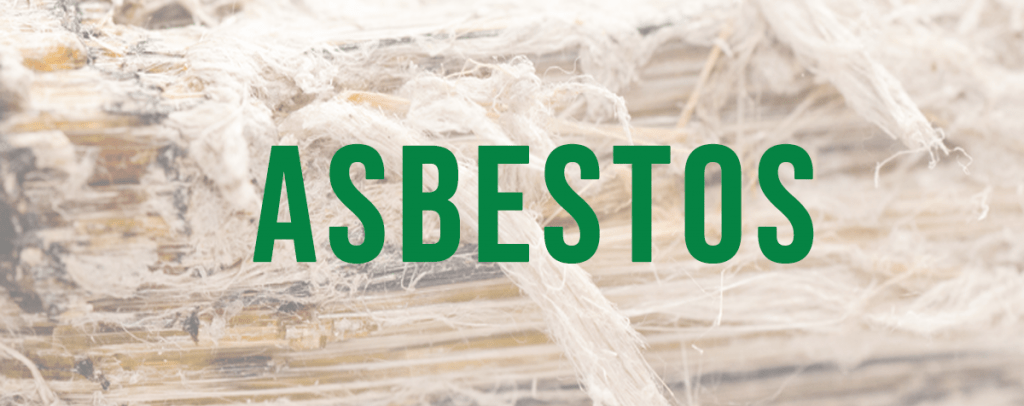How do I know if I had asbestos material in my property/building? Why is asbestos so dangerous?

In this blog article, we will try to explain some basics about asbestos, to make you more knowledgeable about what to look for.
What is asbestos?
Asbestos is a naturally occurring mineral made up of thin, tightly packed fibers. It is a unique mineral that can resist heat, fire, and electricity. The mineral is derived from metamorphic rock and naturally occurs in every continent around the world. Before the health implications of asbestos were known, it was considered a miracle fiber. It was used to such an extent, that the legacy left behind by its widespread use has taken decades to remove.
How many types of asbestos are there?
A surprising fact is there are six different types of asbestos. They are:
• Chrysotile: “White Asbestos” mainly found in roofing material, ceilings, insulations, and floors. This type of asbestos is found 95% in buildings and was mined in Quebec and Vermont.
• Amosite: “Brown Asbestos” commonly found in cement sheets, insulation, tiles, and roofing materials. It does not absorb in water easily. This type of asbestos is found 5% in buildings and this is mined in South Africa.
• Crocidolite: “Blue Asbestos” common in insulation, ceiling tiles, and cement products. It does not absorb in water readily.
• Anthophyllite: This is an amphibole mineral and can be categorized as fibrous, which classifies them as asbestos.
• Tremolite: Contamination of vermiculite insulation, talc, paints, sealants and roofing materials.
• Actinolite: Mainly found in insulation, gardening and fireproofing materials.
Materials containing asbestos were used in commercial buildings, domestic properties, and outbuildings. Asbestos-containing materials (ACMs) can be found both inside and on the outside of buildings, with some being easier to identify than others.
It should be pointed out that although asbestos can be presumed from a visual inspection, its presence can only be confirmed by taking a sample and having it analyzed in a laboratory
Why is asbestos dangerous?
Asbestos has been classified as a known human carcinogen by the EPA.
Asbestos causes cancers of the lung, ovaries, and larynx; and is suspected to cause others, including gastrointestinal cancer. Once inhaled, asbestos fibers may stay in the body indefinitely and cause asbestosis, a progressive inflammatory disease that scars the lungs. Medical experts say there is no evidence for a threshold of exposure for cancer: any amount of airborne asbestos fiber poses a risk.
What do you do if you suspect you have asbestos within your property/building?
The best possible solution would be to hire a professional contractor to run an asbestos test and have it immediately removed or abatement from your property.
How is the process of the Asbestos abatement?
Asbestos abatement involves the identification, removal, repair, and encapsulation of materials or products in a structure to eliminate the threat of exposure to toxic asbestos fibers.
Regulated Work Area
The first step in the abatement process is to set up a regulated work area. Sealing air ducts, disabling HVAC systems, and setting up negative pressure equipment are a few of the steps abatement technicians take to prevent the spread of asbestos fibers through your home or office during the removal and cleanup process.
Technicians will also plasticize floors, walls, and ceilings as needed to protect surfaces not being treated for asbestos.
Material Removal
After a regulated and enclosed work area is established around the surfaces or areas being abated, technicians wearing abatement suits and using personal air monitoring equipment will utilize hand tools to remove asbestos-containing material. The asbestos material is then placed into asbestos disposal waste bags, sealed, taken out through a waste decontamination unit, and stored in a specially labeled trailer or dumpster designed with a protective poly lining.
HEPA Vacuuming
After all asbestos materials are removed from your home, all abated surfaces and areas are wet wiped and vacuumed with a special high-efficiency particulate air (HEPA) vacuum. HEPA cleaning ensures that any lingering asbestos particles in the air are removed. After multiple HEPA cleanings, air and surface samples will be performed to verify the successful removal of asbestos and give you clearance to return to your property/building.
We pride ourselves in providing abatement services you can depend on. Contact us to get started on your next project! Call us: 562-438-7999




